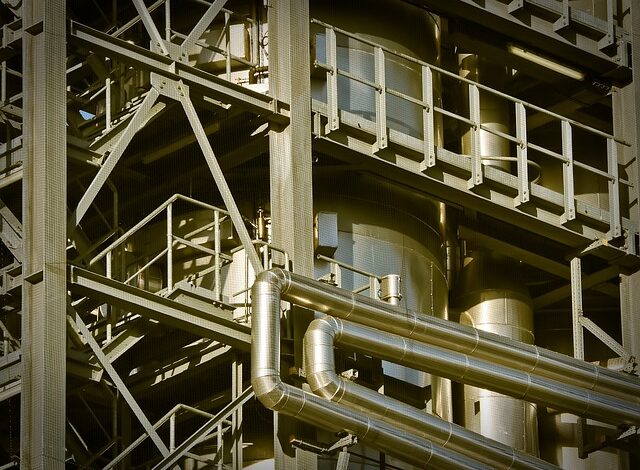Mastering Process Piping: From Services to Projects

Process piping serves as the lifeline of industrial operations, enabling the safe and efficient transport of fluids and gases essential for manufacturing processes. From petrochemical plants to pharmaceutical facilities, process piping plays a critical role in ensuring operational integrity and regulatory compliance. In this comprehensive guide, we’ll explore the world of process piping services and projects, highlighting the key considerations, challenges, and best practices involved in designing, constructing, and maintaining process piping systems.
Understanding Process Piping Services
Process piping services encompass a broad range of activities aimed at supporting the lifecycle of process piping systems, from conceptual design to ongoing maintenance. These services are typically provided by engineering firms, construction contractors, and specialized service providers with expertise in industrial piping applications. Key aspects of process piping services include:
Design and Engineering: Process piping design involves the creation of detailed plans and specifications for piping systems tailored to the specific requirements of industrial facilities. Engineering firms utilize advanced modeling software and simulation tools to optimize piping layouts, material selection, and system performance.
Fabrication and Installation: Once the design is finalized, process piping components are fabricated according to specifications and installed at the construction site. Skilled welders, pipefitters, and equipment operators work collaboratively to ensure the accurate assembly and alignment of piping systems, adhering to industry standards and regulatory requirements.
Testing and Commissioning: After installation, process piping systems undergo rigorous testing and commissioning to verify their functionality, integrity, and compliance with performance criteria. Various tests, including hydrostatic testing, pneumatic testing, and leak detection, are conducted to identify and rectify any deficiencies before the system is put into service.
Maintenance and Repairs: Ongoing maintenance is essential to ensure the reliability and longevity of process piping systems throughout their operational life. Routine inspections, preventive maintenance measures, and prompt repairs help mitigate the risk of corrosion, erosion, and mechanical failure, minimizing downtime and maximizing productivity.
Key Considerations for Process Piping Projects
Process piping projects encompass the design, construction, and commissioning of piping systems for specific industrial applications. Whether it’s a greenfield project for a new facility or a brownfield project involving modifications or expansions to existing infrastructure, process piping projects require careful planning, coordination, and execution. Here are some key considerations to keep in mind:
Regulatory Compliance: Compliance with industry standards, codes, and regulatory requirements is paramount in process piping projects to ensure the safety of personnel, protection of the environment, and integrity of the manufacturing process. Design and construction activities must adhere to applicable regulations such as ASME B31.3, API 570, and OSHA requirements.
Material Selection: Selecting the right materials for process piping is critical to withstand the operating conditions, fluid properties, and environmental factors encountered in industrial applications. Factors such as corrosion resistance, temperature tolerance, and mechanical properties must be carefully evaluated during material selection to ensure long-term reliability and performance.
Risk Management: Process piping projects entail inherent risks, including schedule delays, budget overruns, and safety hazards. Comprehensive risk assessments should be conducted to identify potential threats and develop mitigation strategies to minimize their impact on project outcomes.
Project Management: Effective project management is essential for successful execution of process piping projects, encompassing planning, scheduling, resource allocation, and stakeholder coordination. Clear communication, proactive risk management, and adherence to project milestones are key factors in achieving project success.
Best Practices for Success
To achieve excellence in process piping services and projects, stakeholders should embrace the following best practices:
Collaboration and Communication: Foster a culture of collaboration and communication among project teams, stakeholders, and subcontractors to facilitate knowledge sharing, innovation, and problem-solving throughout the project lifecycle.
Continuous Improvement: Embrace a mindset of continuous improvement and learning, seeking opportunities to optimize processes, adopt new technologies, and enhance performance based on lessons learned from past projects.
Safety First: Prioritize safety as a core value in all aspects of process piping services and projects, implementing robust safety protocols, training programs, and risk management strategies to protect the well-being of workers and the surrounding environment.
Client-Centric Approach: Adopt a client-centric approach focused on understanding and meeting the unique needs and objectives of clients, delivering solutions that exceed expectations in terms of quality, reliability, and value.
Conclusion
Process piping services and projects represent the backbone of industrial infrastructure, supporting the safe and efficient transport of fluids essential for manufacturing processes. By leveraging advanced engineering expertise, innovative technologies, and best practices in design, construction, and maintenance, stakeholders can optimize the performance, reliability, and sustainability of process piping systems. As industries continue to evolve and embrace new challenges, process piping professionals play a crucial role in shaping the future of industrial operations and driving innovation in the global marketplace.



